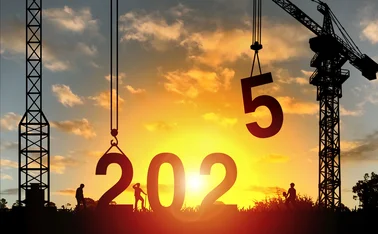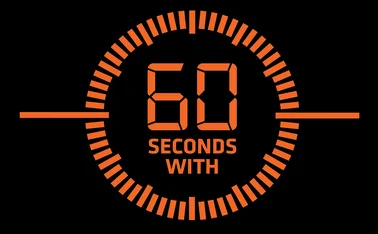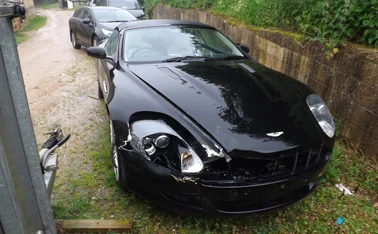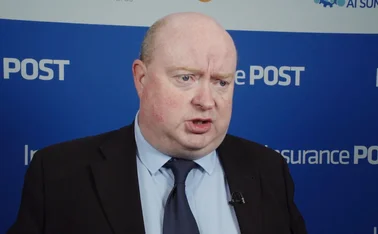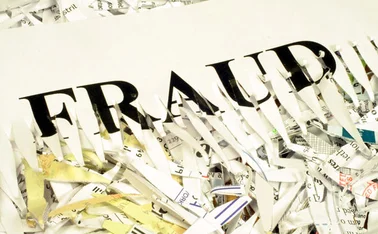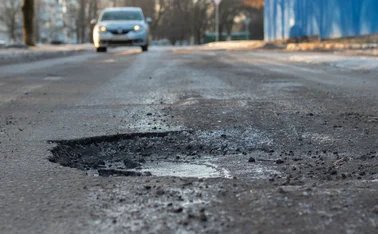
Analysis: How the industry learnt from the 1987 Great Storm

Need to know
- Insurers put claims forms in newspapers to cope with swell of claims
- Claims inflation and low-level fraud was common
- Policyholders were stoic despite frustrating limitations on customer service
- Storm led to the growth of cat modelling in Europe
A look back at how disaster claims have moved on
Thirty years ago, the worst windstorm in living memory swept across the South East of England, killing 18 people, felling 1.5 million trees and leaving 250,000 homes without power.
Post talked to industry figures who worked on claims at the time, about the changes that have occurred in insurance over the past 30 years and how those changes would shape the claims response today.
A different time
In a time before windstorms were named, the extratropical cyclone which hit the UK on the night of 15 October 1987 simply became known as ‘the Great Storm’. In reinsurance circles, it earned the somewhat less dramatic moniker of 87J.
In 1987, the industry was a radically different place. The main insurers at the time were Commercial Union, Cornhill, Eagle Star, Sun Alliance, GRE, Royal and Norwich Union. However, a lot of building insurance was sold through building societies.
There were no call centres, and much of insurance was sold face-to-face.
In claims too, there were major differences. There were no panel relationships with loss adjusters, no managed builder networks, no risk management, no surge planning.
Policies, estimates and claims forms were all paper-based, and the majority of insurers didn’t even have the most basic Amstrad model of personal computers that had started to be available at the time.
Peter Monk, head of claims control at RSA, was a claims handler with Sun Alliance in Croydon at the time of the storm. He said once claims started to come in, the branch faced challenges that wouldn’t be seen in today’s paperless offices.
“We ran out of filing cabinets very quickly and places to put claims forms and estimates,” he said. “There was also a real difficulty in getting paper, and the Post Office was struggling as well.”
An industry unprepared
One of the most talked about moments at the time of the storm, and for many years after, was the forecast from BBC weatherman Michael Fish.
Infamously, he said: “Earlier on today, apparently, a woman rung the BBC and said she heard there was a hurricane on the way… Well, if you’re watching, don’t worry, there isn’t.”
Hours later, the biggest storm to hit the UK for 300 years made landfall in the South East of England, causing £1.4bn in damages and killing 18 people.
The storm caught the insurance industry wholly unprepared. “There was absolutely no planning back in 1987,” said Nick Lock, head of property claims at Allianz, which was then Cornhill.
How much would the storm cost in today’s money?
Claims from the 1987 Great Storm reached £1.4bn (gross of reinsurance), which equated to nearly 50% of total property insurance premiums.
However, there is little consensus on how much the storm would cost in today’s money. Here are some estimates:
£3bn - Deloitte
£2.83bn - Association of British Insurers
£2.5bn to £3.2bn - Sompo Canopius
£3.57bn - RMS
“We had to pull people in from different departments and quickly train them up in how to deal with claims.”
That’s something Monk remembers too. “We shipped anyone that could handle a claim in from other locations, even from as far afield as Birmingham,” he said.
“To augment that, we had a lot of agency staff to answer the phones. We only had a certain amount of space and we had to fit almost twice as many people in the same space instantly.”
The same was also true for loss adjusters. Gerald Williams, director of Fitzgerald Consulting, was a loss adjuster at Thomas Howell Group at the time, before the company was later bought by Crawford.
“We mobilised a lot of people down from other parts of the country, as the South East was very badly hit,” he said. “People came from Manchester and all other parts of the country to assist.”
Opportunity knocks
Insurers at the time had an old-fashioned switchboard rather than what we expect from a call centre today. That meant there were often issues in getting someone on the phone at all.
“It became immediately apparent that every phone was ringing off the hook constantly,” said Monk. “The switchboard was incredibly busy and a lot of customers were simply getting the engaged tone.
“There were no automated messages at the time and customers were really struggling to get hold of us. It wasn’t unusual for customers to wait weeks before they could get someone from the insurance industry to talk about their claim.”
One of the ways insurers took to communicating with the public was through full page adverts in major national newspapers. In some circumstances, those adverts also contained claims forms.
Many insurers made the decision early on to pay damages based on a single quote from a building contractor, when the value of a claim was under £1000.
“Two big insurers in particular were very naïve,” said Paul May, chairman of Concordia Consultancy, who was overseeing the Croydon office of a major loss adjuster at the time of the storm.
“From their perspective, they may have thought they were providing a market-leading, quick solution.
“However, there was undoubtedly a spate of people using their newly acquired Amstrads printing out dodgy quotations and attaching them to these claims forms.
“On some of the bigger cases, there were people trying to fabricate quotes using simple word processor applications.”
Dr Robert Muir-Wood, RMS chief research officer, said that it encouraged claims inflation.
“They told people that if their claims were below a certain threshold, they’d get their claim processed immediately without question,” said Muir-Wood.
“At the time, that seemed like the smart thing to do. Now it’s recognised that it simply encourages claims inflation.
“I remember for some years after this storm having conversations in pubs with people you’d think to be upstanding citizens, who admitted they had exaggerated their claims.”
Williams agreed: “A lot of people had their homes substantially improved as a result of the hurricane.”
Claims inflation
Part of the problem was that building contractors were inundated with business in the immediate aftermath of the storm, and increased prices accordingly. The same was true of building suppliers.
“The morning after the hurricane, a major building supplier that provided roof tiles put their price up 25%,” said May. “Nowadays we call that price gauging. They realised that the majority of that 25% would be picked up by insurers.
“For some policyholders though, it had the effect of putting them into an underinsurance position, where the value of the house based on the price of materials was more than they had insured for.”
Nigel Forrest, major loss specialist at Crawford Global Technical Services, said the demand was very real.
“It was a big moment when the first lorry load of roof tiles arrived,” he said. “Builders merchants ran out almost immediately as the whole South East region’s roofs had been blown away.”
Because of that, insurers had to take a lot of the claims inflation on the chin. “We were acutely aware that builders were stretched and prices were going up,” said Monk.
“Claims inflation was horrendous at the time. There was no point in asking people to get two estimates and go ahead on the lower as the costs were very similar anyway and were quite high. You had to be pragmatic.
“Ordinarily, you would contest a claim where a dozen tiles were costing you quite a lot. At the time, it wasn’t the fault of policyholders. That was the rate that roofers could get away with, owing to the demand on their services.
“We hadn’t written off fraud. Any significant claim would have gone through the same process with adjusters. The slightly inflated prices, we took on the chin.
“That wasn’t something we could address. You’d have been penalising the policyholder for the difficult situation they found themselves in. If they started arguing about the estimate, the contractor would go off and get another job.
“However, if something was clearly fake or made up, there were processes to deal with that.”
Back at the time, there was little in the way of rehousing people affected by the storm.
“There were people calling up who had their roofs blown off,” said Lock. “The immediate reaction to that would have been to instruct a loss adjuster. We didn’t give any other wider advice.
“What is a game-changer now is our approach now to rehousing people. We might build temporary kitchens and bathrooms where people are impacted or perhaps getting people into hotels. Whereas my memory back in those days was that wasn’t something you thought about proactively.”
Public exasperation
Monk said despite the difficulty reaching an insurer on the phone, and the lack of customer centricity, there wasn’t the same level of public exasperation as you’d expect today.
“People were very cool and very typically British,” he said. “They were matter-of-factly telling you that a 100ft oak tree was in their bedroom, they only had a one bedroom bungalow, and were wondering where they were going to sleep.
“There were other calls where people would say their greenhouse was up their neighbour’s tree and they felt very bad about that, as it was an eyesore.”
“Back then, people were very stoic. It struck me how much fortitude people had to just get on with things and try to solve their own problems as much as they could.”
Although Monk and Lock said customer service has dramatically improved between insurers and policyholders, May believes the opposite is true for loss adjusters.
“The loss adjusting side responded tremendously, mainly because it had not yet subscribed to a lot of these panel-based, cheap rate, one-visit deals that they now subscribe to.
“Experienced and enthusiastic loss adjusters were deployed. Quite often you would visit the same house twice or three times during the course of repairs.
“I don’t think policyholders get as good service on these big national disasters as they did in 1987 from the pre-screwed down loss adjusting firms that are operating now.”
Picking up the pieces
Claims teams were working overtime at least until the following Easter. Monk recalls working on Good Friday and Easter Sunday to process the volume of claims.
However, very little changed in the immediate aftermath of the storm. It wasn’t until the January 1990 floods that risk management and surge planning became more common throughout the industry, said Lock.
“The perception at the time was that this was a one-off,” he said. “It was only after January 1990, where we were hit with another event that was more widescale, that we started to make changes.”
Muir-Wood said the 1987 storm gave birth to the rise of catastrophe modelling in Europe. “In the 1990s, there was a whole succession of damaging storms that also affected other European countries,” he said.
“1987 was the start of about eight years of major catastrophes around the world, which left the global insurance and reinsurance industries reeling from the losses.
“This became a reinsurance issue. There was a whole revolution that followed in terms of risk modelling. At the time of 87J, there was no risk modelling at all for windstorm in Europe. All of that was developed through the 1990s, and it was all kicked off in Europe by 87J.”
Only users who have a paid subscription or are part of a corporate subscription are able to print or copy content.
To access these options, along with all other subscription benefits, please contact info@postonline.co.uk or view our subscription options here: http://subscriptions.postonline.co.uk/subscribe
You are currently unable to print this content. Please contact info@postonline.co.uk to find out more.
You are currently unable to copy this content. Please contact info@postonline.co.uk to find out more.
Copyright Infopro Digital Limited. All rights reserved.
As outlined in our terms and conditions, https://www.infopro-digital.com/terms-and-conditions/subscriptions/ (point 2.4), printing is limited to a single copy.
If you would like to purchase additional rights please email info@postonline.co.uk
Copyright Infopro Digital Limited. All rights reserved.
You may share this content using our article tools. As outlined in our terms and conditions, https://www.infopro-digital.com/terms-and-conditions/subscriptions/ (clause 2.4), an Authorised User may only make one copy of the materials for their own personal use. You must also comply with the restrictions in clause 2.5.
If you would like to purchase additional rights please email info@postonline.co.uk

